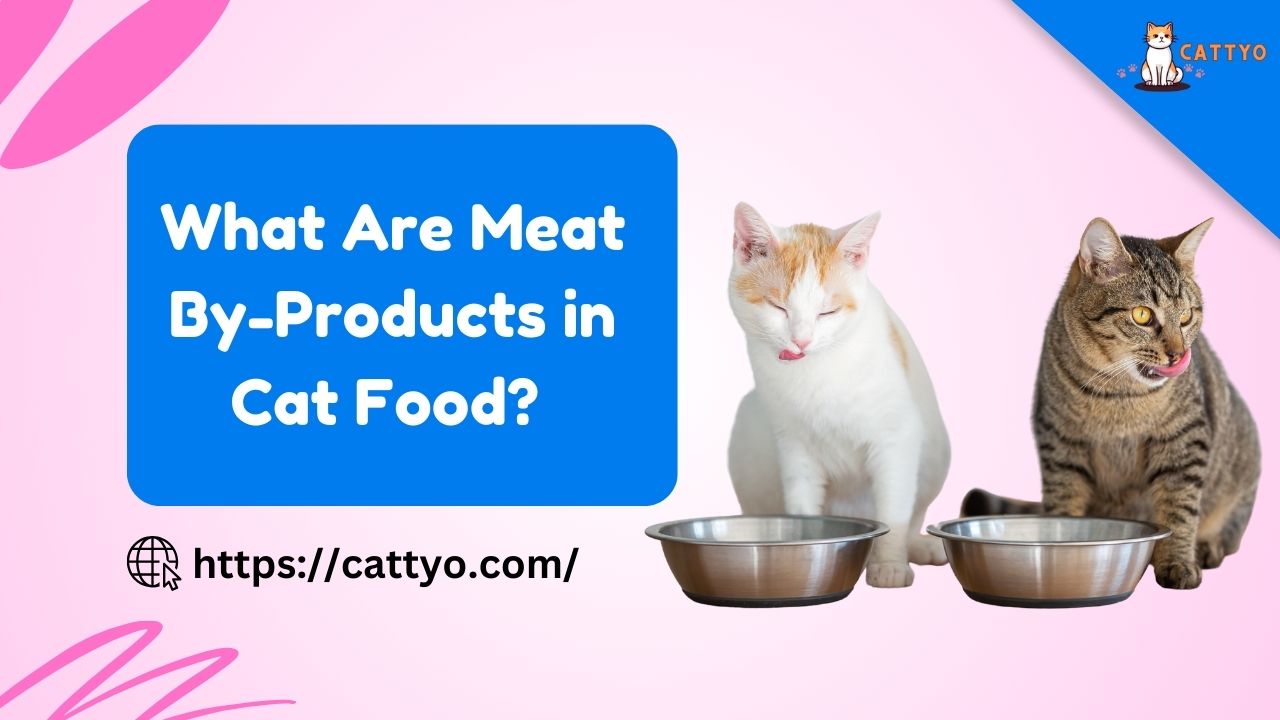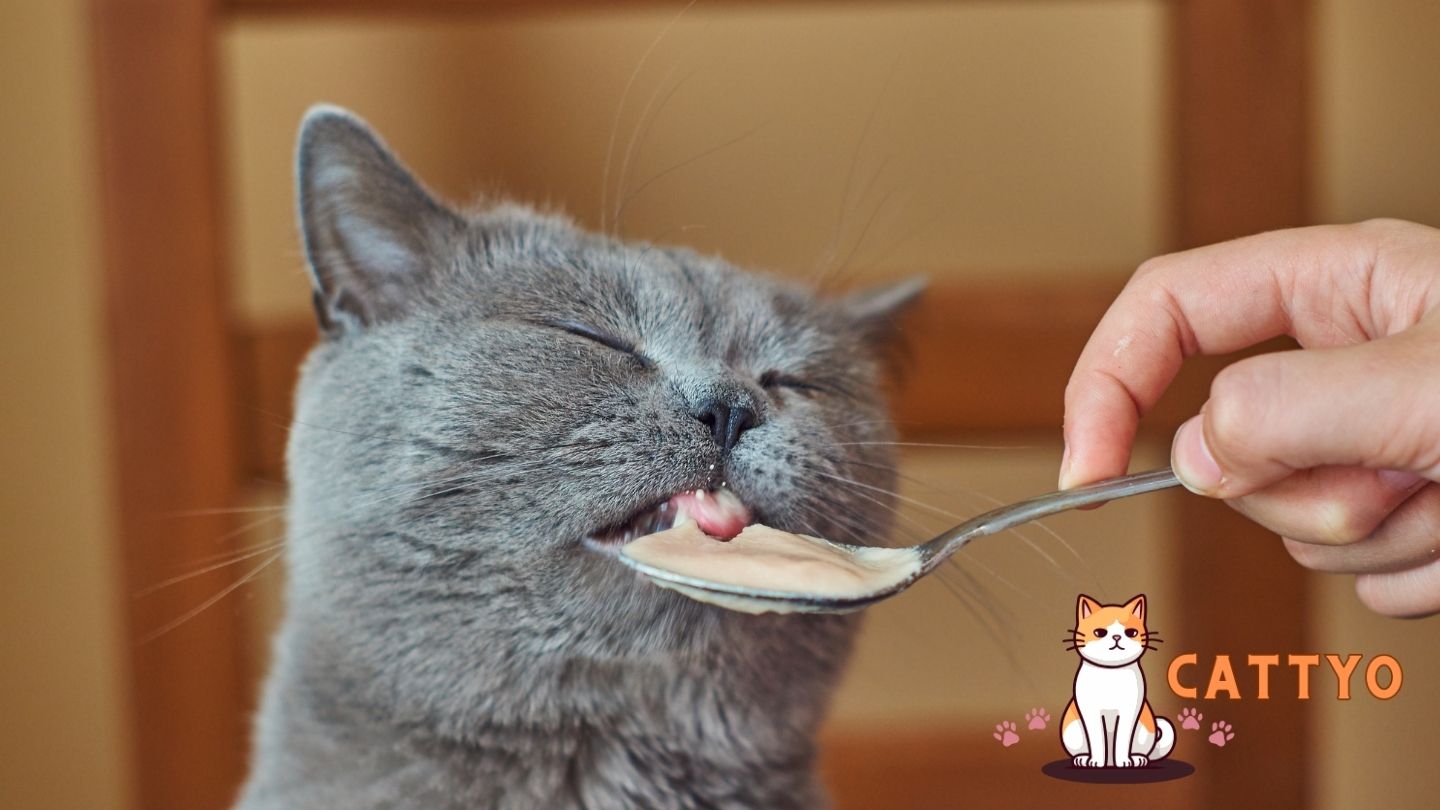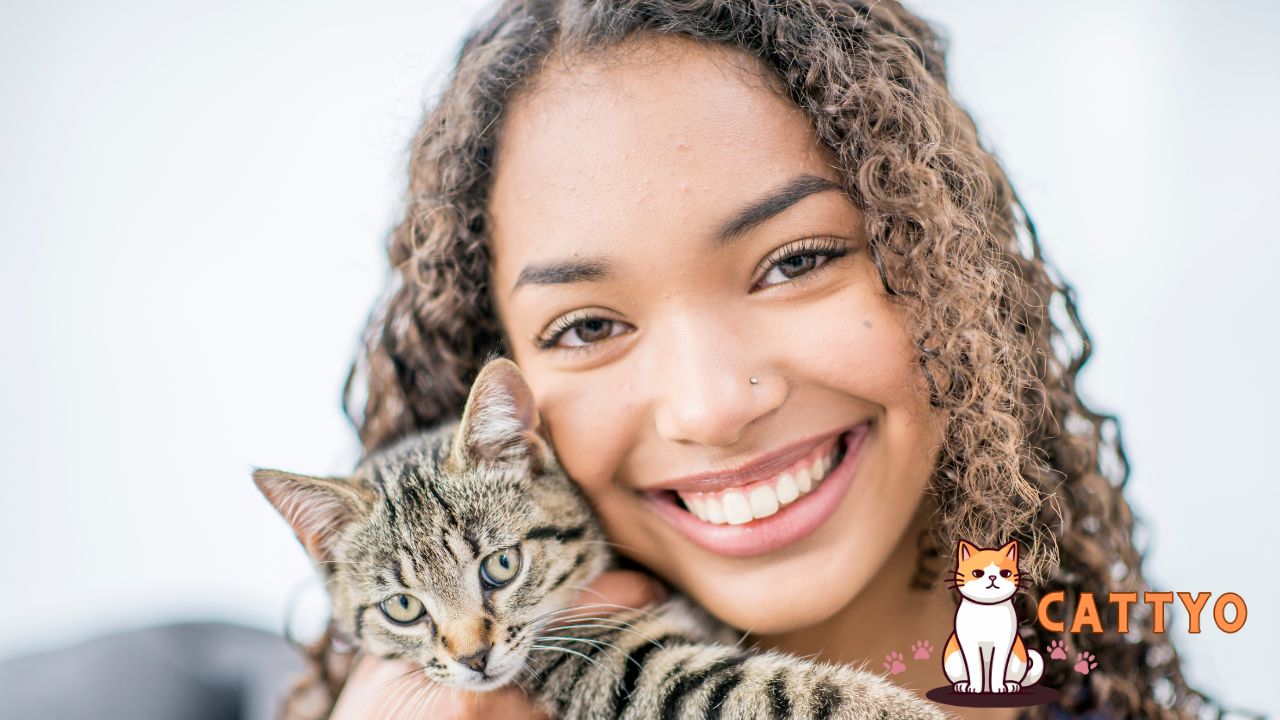Meat by-products in cat food are leftover parts of the animal that are not typically consumed by humans, such as organs, bones, and tissues. These are used to provide additional protein and nutrients in pet food. While they can be nutritious, the quality varies depending on the source and processing methods.
If you’ve ever picked up a can of cat food and squinted at the ingredients list, chances are you’ve encountered the term “meat by-products.
And if you’re anything like me, you probably wondered, What exactly are meat by-products, and should I be worried about feeding my cat this stuff?
You’re not alone—lots of pet parents are scratching their heads about what this term actually means and whether it’s safe for their feline friends.
Let’s dive in and break it down, shall we? By the end of this, you’ll not only understand what meat by-products are, but you might just have a few more thoughts on whether or not they belong in your cat’s diet.
What Are Meat By Products in Cat Food?
Meat by-products in cat food are animal-derived ingredients, such as organs, bones, and other tissues, that are not typically consumed by humans.
These by-products serve as a source of protein and other nutrients in pet food. While they can be nutritious, the quality of meat by-products varies depending on their source and the way they are processed.
- Definition: Meat by-products are animal parts like organs, bones, and tissues not usually eaten by humans.
- Nutritional Benefits: They provide valuable protein and other nutrients for cats.
- Quality Considerations: The quality of meat by-products can differ based on sourcing and processing methods.
- Role in Pet Food: Used to enhance the nutritional profile of cat food at a lower cost.
- Regulation and Standards: Reputable pet food manufacturers ensure that meat by-products meet safety and nutritional standards.
1. What Exactly Are Meat By-Products?
You know how you might use every part of a chicken when cooking—breasts, wings, thighs, and even the bones for stock?
Well, meat by-products in cat food are kinda like that, but on a larger scale. They refer to the parts of an animal that are not typically considered “human-grade” meat.
Think organs (liver, heart, kidneys), blood, bone, and sometimes even parts of the animal that are not as familiar to us—like feet or beaks.
It sounds a little less appetizing when you say it out loud, right? But hold on, it’s not all bad news. These by-products are packed with essential nutrients that your cat needs—protein, fat, vitamins, and minerals.
While we might be squeamish about some of the less glamorous cuts, for your cat, these parts are often nutrient-rich and can provide a balanced diet.
2. Why Are Meat By-Products in Cat Food?
So why even use by-products at all? Well, meat by-products can be an efficient, sustainable, and affordable way to pack more nutrients into your cat’s food without breaking the bank.
Instead of using just prime cuts of meat (which can be expensive), manufacturers turn to these leftover parts, which can be just as nutritious—sometimes even more so, depending on the animal.
And here’s an interesting twist: when you look at a food label that lists “chicken” or “beef” as the first ingredient, you might assume it’s made from the muscle meat.
But what if that “chicken” actually includes the whole bird—bones, skin, and all? Yep, that can happen too.
3. Are Meat By-Products Safe for Cats?
Let’s tackle the big question: Are meat by-products safe for your cat? The short answer is yes. But, as with anything, context matters.
In pet food, “meat by-products” are generally subject to strict regulations and inspections to ensure they meet certain safety and nutritional standards.
That said, not all by-products are created equal. Some low-quality brands may use by-products that aren’t up to snuff, leading to concerns about contamination or improper processing.
But the truth is, the vast majority of meat by-products in cat food are safe and even beneficial for your cat’s health.
4. The Good, The Bad, and The Weird: A Closer Look
So let’s break it down further—what are the good and bad by-products?
- The Good: Organ meats, such as liver, heart, and kidneys, are incredibly nutritious. These parts are high in protein, vitamins (like A and B12), and minerals (like iron and zinc), making them excellent for your cat’s immune system and overall health.
- The Bad: Some by-products, like feathers or hooves, might not be as digestible or nutritious for your cat. Luckily, these are rarely used in higher-quality brands.
- The Weird: Yep, some cat foods might include things like beaks, intestines, or even cartilage. But again, these parts aren’t inherently harmful—just a bit… unusual. It’s more about how well they’re processed.
5. How Are Meat By-Products Different from Regular Meat?
Here’s a question that might cross your mind: how are meat by-products different from regular, juicy cuts of meat like chicken breast or beef steak?
The key difference lies in the part of the animal used and the type of processing it undergoes.
Muscle meat is typically lower in fat and can sometimes be less nutrient-dense than organ meats.
On the other hand, meat by-products often contain higher amounts of fat and other essential nutrients—things like taurine (an amino acid) that cats absolutely need for heart and eye health.
6. Common Myths About Meat By-Products
There’s a lot of misinformation floating around about meat by-products. Let’s debunk a few common myths:
- Myth #1: Meat by-products are gross and dangerous.
The reality is, by-products are just parts of the animal that aren’t commonly used for human consumption. They can be highly nutritious and are thoroughly regulated for safety. - Myth #2: By-products are just “leftovers” that nobody wants.
Actually, many by-products are prime sources of essential nutrients and are regularly used in human food (think liver pâté or bone broth). - Myth #3: By-products mean lower quality food.
Not necessarily! In fact, some high-quality pet food brands use premium by-products like chicken liver and heart because of their nutritional value.
7. Do Meat By-Products Affect My Cat’s Health?
So, will feeding your cat food with meat by-products cause any health problems? If you choose a reputable brand, the answer is no. Meat by-products can actually support your cat’s health by providing them with a balanced mix of nutrients.
However, if you opt for a lower-quality food brand, you might run into issues like poor digestion or imbalanced nutrition. Always check the source and quality of the meat by-products used.
8. How Meat By-Products Fit into a Balanced Diet
It’s all about balance. Just like a human diet can include both prime cuts of meat and less popular parts (hello, bone broth), your cat can thrive on food that includes meat by-products—provided they make up a well-balanced meal.
These by-products can help ensure your cat gets a variety of essential vitamins, minerals, and amino acids that are vital for their overall health.
9. Popular Brands and Their Use of Meat By-Products
Some brands embrace meat by-products as a natural part of a healthy diet, while others steer clear of them entirely. It all depends on what you’re looking for in your cat’s food.
For example, some higher-end, grain-free brands love to tout the use of “real chicken” or “real beef” as their main ingredients, but when you take a closer look, that often includes chicken and the rest of the bird (which is, yup, technically a by-product).
10. Alternatives to Meat By-Products in Cat Food
If you’re not sold on meat by-products, don’t worry—there are plenty of cat food options out there that focus on whole meats like turkey, chicken, or fish. These foods typically list a single, clean protein source as the main ingredient and avoid any animal by-products.
However, just remember that even these “clean” options can still use bone meal or fish oil for added nutrients, so the term “by-product” can be a bit flexible.
What Are Meat By-Products, Really?
Okay, so let’s get this straight: meat by-products don’t mean that the company is tossing leftover, disgusting scraps into your cat’s food.
They might sound less-than-appealing, but that’s mainly because the phrase isn’t exactly the most glamorous way of describing certain animal parts.
In the context of cat food, meat by-products are essentially the parts of the animal that are used in food production, but not typically sold as meat for human consumption.
Think organs, bones, and other edible parts that you might not normally eat yourself but still pack a nutritional punch for your furry friend.
Now, this might sound a bit grim, but here’s the thing: cats are obligate carnivores. That means they thrive on animal-based proteins, and these by-products actually contain nutrients that are beneficial for your cat.
In fact, organs like liver and kidneys are loaded with vitamins and minerals that are essential for your cat’s health. Weird, right? But totally natural for your feline friend.
The Good, The Bad, and The Ugly
Like any ingredient, meat by-products have their pros and cons. Let’s break it down a bit.
The Good
- Nutrient-Rich: As mentioned, the organs and other parts used in meat by-products are packed with nutrients that cats need. Liver, for example, is high in vitamin A, and hearts are a good source of taurine—a crucial amino acid for cats.
- Sustainability: Using meat by-products helps reduce waste. It’s like buying the whole chicken instead of just the boneless breast. Every part of the animal gets used, which is better for the environment and more economical.
- Protein Power: Though these parts aren’t always as “high-quality” as muscle meat, they still pack a punch in terms of protein. Your cat’s body doesn’t care whether the protein comes from a chicken breast or a chicken heart.
The Bad
- Vagueness: The term “meat by-products” is kind of a catch-all. It doesn’t specify what animal parts are being used, and that can make some pet owners uneasy. You might wonder, “Is it all from a trustworthy source? Or is my cat eating... who knows what?”
- Potential for Lower Quality: While many meat by-products are nutrient-rich, some can be lower in quality compared to fresh muscle meat. The quality largely depends on the manufacturer’s sourcing practices.
The Ugly
Okay, let’s get real. Some cat food brands might use low-quality meat by-products that aren’t the most appetizing. We’re talking about things like feathers, beaks, and even hooves.
Yikes, right? But here’s the kicker: that’s more of an exception than the rule. Reputable brands usually use high-quality by-products, like organs and glandular tissue, which are far more nutritious.
So Should You Worry?
Probably not. If your cat food brand is from a reputable company, the “meat by-products” are most likely safe, nutritious, and—dare I say it—quite beneficial for your kitty.
The key is to make sure you’re choosing a brand with high standards and transparency about where they source their ingredients. Don’t be afraid to do a little research or ask questions. Your cat’s health is totally worth it.
Let’s Look at a Real-World Example
Imagine this: you’ve just adopted a fluffy kitten named Miso (great name, by the way), and you’re so excited to spoil her with the best food. You’re standing in the pet store aisle, staring at two bags of cat food.
Bag one: All-natural, organic ingredients. No by-products, just “real” chicken and beef.
Bag two: A more budget-friendly option. The label includes “meat by-products.”
Which do you choose?
Well, in this scenario, you might think that the first bag is the obvious choice. It’s organic, it has no by-products, and it sounds like it’s packed with the good stuff. But hold on—just because bag one doesn’t have by-products doesn’t mean it’s better for Miso.
The truth is, the second bag might actually have more balanced nutrition, especially if it includes organ meat, which is often left out of premium “real meat” formulas. Miso might actually be getting more vitamins and nutrients from the by-products in bag two!
Now, I’m not saying you should always go for the cheaper option, but it’s a reminder that things aren’t always as black-and-white as they seem.
Quick Breakdown: Meat By-Products vs. “Real” Meat
| Feature | Meat By-Products | Real Meat |
|---|---|---|
| Nutritional Value | High in vitamins, minerals, taurine, etc. | High in muscle protein, but may lack organ nutrients |
| Transparency | May be vague on animal part specifics | Clear on what cuts of meat are used |
| Sustainability | More sustainable, less waste | Typically uses fewer parts of the animal |
| Quality | Varies based on manufacturer | Typically higher quality cuts |
FAQs About Meat By-Products in Cat Food
Are meat by-products the same as fillers in cat food?
No, meat by-products are not fillers. Fillers are often plant-based ingredients like corn or soy, while by-products come from animal parts that are nutritious.
Should I avoid cat foods with meat by-products?
Not necessarily! It depends on the quality of the by-products. High-quality brands use organ meats, which are beneficial for your cat’s health.
Can my cat be allergic to meat by-products?
It’s rare, but some cats could be allergic to specific proteins found in certain by-products. If your cat has allergies, consult your vet.
Are meat by-products in cat food bad for cats with sensitive stomachs?
Some cats with sensitive stomachs might have trouble digesting certain by-products. Always opt for gentle, easily digestible foods if your cat has tummy troubles.
Do meat by-products provide enough protein for my cat?
Yes, many by-products (like chicken liver or beef heart) are packed with protein, making them an excellent addition to a cat’s diet.
Are meat by-products safe for kittens?
Yes, as long as they come from a reputable brand and are part of a balanced diet, meat by-products are safe for kittens.
Conclusion: Is Meat By-Product Cat Food Really That Bad?
At the end of the day, it’s all about understanding the source and quality of the meat by-products in your cat’s food.
When chosen wisely, meat by-products can provide essential nutrients and contribute to a balanced, healthy diet. If you’re concerned about the specific ingredients, it’s always a good idea to do some research or consult your vet.
Because, let’s face it, we want the best for our fur babies—whether they’re munching on chicken liver or a juicy chunk of muscle meat.






